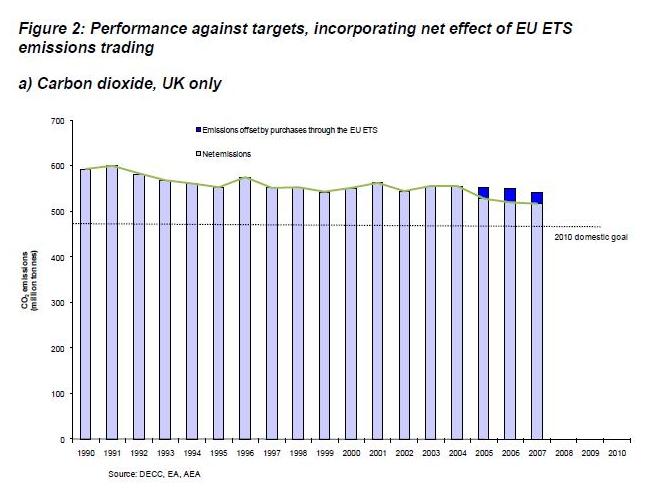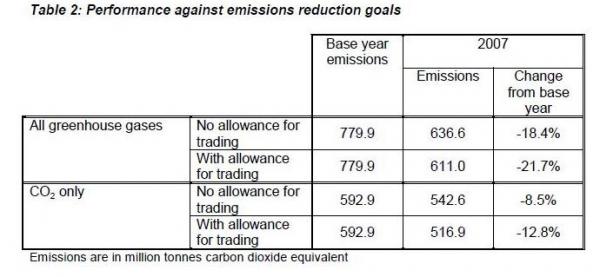Carbon Credits or hot air?
Britain’s reduction in greenhouse gas emissions has been reported by the Government in a way that is likely to mislead, the UK Statistics Authority has concluded.
The claim that UK net emissions of carbon dioxide were 12.8 per cent lower in 2007 than in 1990 – made by the Department for Energy and Climate Change in February – is “unsatisfactory” and falls short of meeting the Code of Practice for Official Statistics, says the authority’s chairman, Sir Michael Scholar, in a letter to Tim Yeo, Chair of the Environmental Audit Committee of the House of Commons.
Mr Yeo has been subjecting Ed Miliband, the Secretary of State at DECC, to a persistent grilling on the way the department presents its figures. UKSA’s ruling backs Mr Yeo, and calls for future statistical releases to be accompanied by enough clear explanation to guide the reader to a secure interpretation.
Why is the 12.8 per cent figure potentially misleading? Because it is not the true reduction since the base year (1990), which is actually 8.5 per cent. In simple terms, Britain is pumping out 8.5 per cent lower quantities of greenhouse gases now than it was then.
The 12.8 per cent figure has been achieved by buying “carbon credits” in 2005, 2006, and 2007. A net total of 82.3 million credits were purchased in these three years, and then the figure for total emissions was adjusted downwards accordingly. Each credit represents a tonne of carbon dioxide, so the total emitted, after allowance for trading, was adjusted by 82.3 million tonnes.
It is this adjustment that turns a real reduction of 8.5 per cent into a claimed reduction of 12.8 per cent – and it is entirely within the rules. Carbon credits are tradeable, so that a plant that does better than expected – undershooting its target - can sell carbon credits to others, in this case in the UK, who are not doing as well as they would wish.
As the graph shows, the Government incorporates these reductions in its measurement of performance in meeting the domestic goal of reducing carbon dioxide by 20 per cent from its 1990 level by 2010.

Mr Yeo says that EU member states over-allocated authorisations in the period between 2005 and 2007, so that there were lots of credits swilling about. These credits are supposed to represent an over-achievement of target by a plant somewhere in the EU. But if too many were allocated, purchasing credits was simply, as Mr Yeo puts it, “buying hot air”.
If this is the case – and it has been admitted by ministers, by the Treasury, by Defra and by Mr Miliband – then Mr Yeo asks what justification there is for assuming that the purchase of 82.3 million credits was equivalent to reducing actual emissions by 82.3 million tonnes. The figures, he says, are inherently unreliable and should be withdrawn, with an explanation why.
Sir Michael’s letter does not go this far. He does not call for the figures to be withdrawn, but urges that future releases should make the whole process clearer.
Referring to the 12.8 claimed reduction in carbon emissions, and the 21.7 per cent claimed reduction in all greenhouse gases (see Table) he says: “The figures mentioned are, in our view, likely to be used by non-expert observers to judge progress in reducing carbon dioxide emissions within the UK. For reasons including those set out in your correspondence with the Secretary of State we regard the quoted figures (and particularly the percentage change) as unsatisfactory in the context of that use”.




